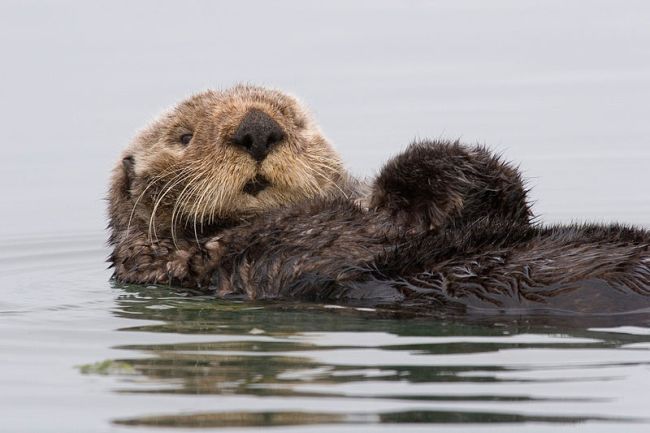Clearly if you flood vegetation with chemicals or nutrients you can disrupt plant growth if not prevent it, just think of what pesticides can do to delicious fruit or how weed killer prevents weeds altogether. Well for Elkorn Slough the vegetation Hughes and his colleagues focused on in their study was sea grass.
In the unusual four-level food chain present in Elkorn Slough, it was shown that restoring an apex (or top) predator can lessen these bottom-up, or nutrient-flooding, influences on the sea grass.
Nutrient loading is considered to be a bottom-up influence because it directly impacts producers like sea grass which leads to an influence on those organisms that eat the sea grass; these affects carry on through the food chain, similar to that of a domino effect—knock over one domino and it disturbs the last in the chain.
Elkorn Slough is an estuary on the coast of California that has too much nutrients that the natural sea grass commonly referred to as eelgrass has difficulty growing. The top predator Hughes focused on in this ecosystem to balance out nutrient-flooding was the adorable sea otter.
Sea otter floating in California bay 21 February 2007. Image by “Mike” Michael L. Baird.
The sea otter was introduced to Elkorn Slough in 1984 in a time that eelgrass was at an all-time low. Before 1984, eelgrass presence was continuously decreasing as nutrient levels rose—not uncommon. Think of it as nutrient-flooding being the amount of bullying in school gym class and eelgrass as level of fun in class for the weak students.
Once sea otters inserted themselves into the system a complete shift occurred—think vice principle now watching every gym class. Despite severe nutrient-loading (lots of bullying) and an expected huge drop in eelgrass (expected torment all day), the Elkorn Slough sea grass actually expanded (the fun level actually grew).
Following initial sea otter introduction, the eelgrass area multiplied by six. As Hughes pointed out, sea otter population was significantly correlated with eelgrass growth.
Although a remarkable finding, this abnormality puzzled scientist. How could a top predator like the sea otter not only lessen nutrient-loading on sea grass but actually help these producers expand? Thinking back to the analogy: how did putting the vice principal in gym classes not only lessen bullying on the defenseless but actually increase the level of fun for those picked on?
The truth lies within the otter’s diet of marine invertebrates. Specifically, the crab feeds on eelgrass and is food for the sea otter.
With the influx of otters there was “a significant decline in the [number of individuals] and size of crabs in the estuary” (Hughes, et al.). Through these indirect means (eating all the crabs they could find), sea otters lessened the predation threat felt by eelgrass.
Essentially, the vice principal fed on sending bullies (crabs) to detention. So by pulling out most of the bullies in gym, the class weaklings (sea grass) could have fun now (expand) due to lessened bullying.
Therefore, by putting sea otters in the Elkorn Slough, crabs were greatly reduced in not only numbers but also size, resulting in lesser nutrient-loading felt by eelgrass. Thus reintroducing a top predator into a region can lower bottom-up influences.
Works cited: Article by Brent Hughes, et al. at:
http://www.pnas.org/content/110/38/15313.full.pdf+html

